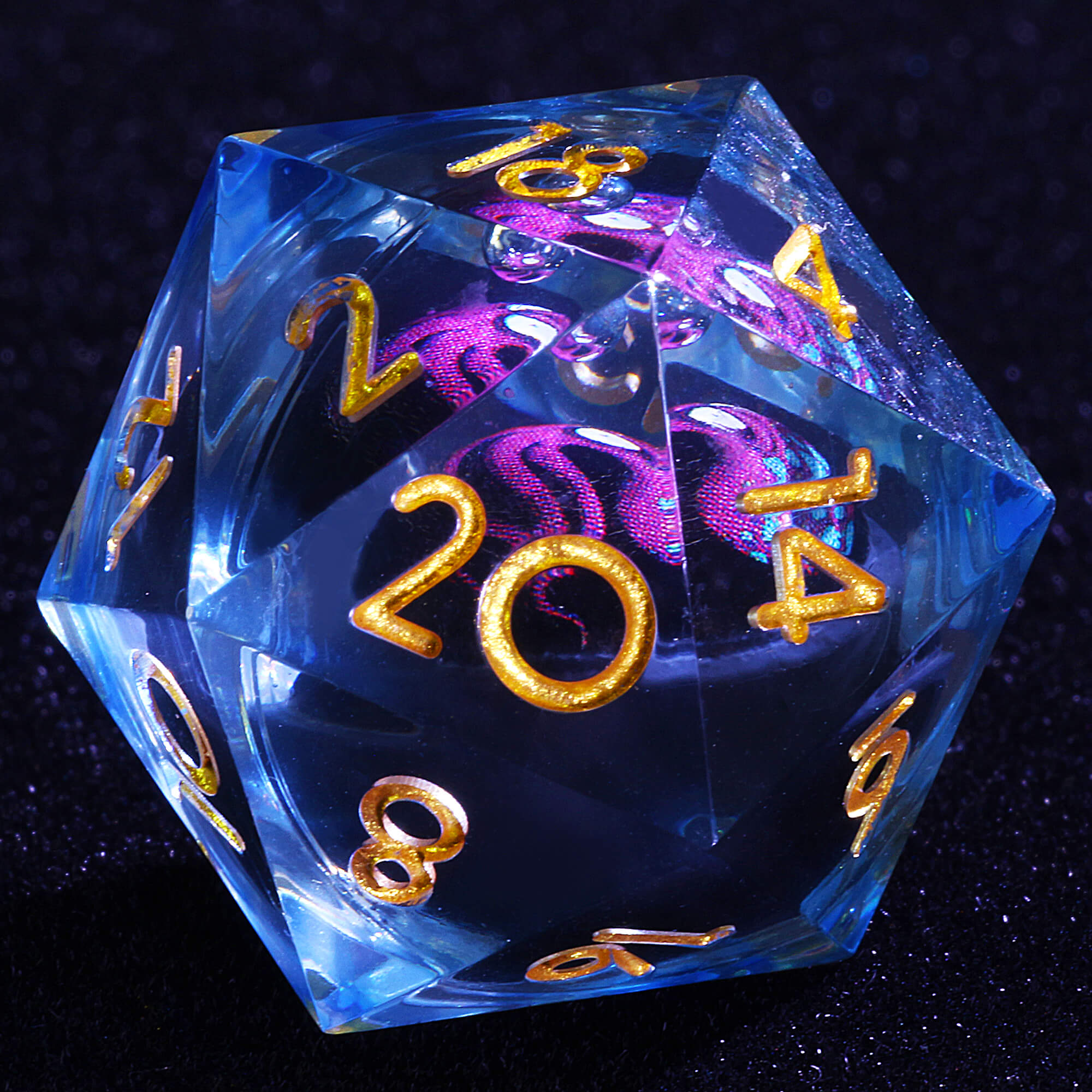In the thrilling world of tabletop gaming, dice are not just tools but the heart of the game. The six-sided die, or D6, has each face having an equal 16.67% chance of being rolled. But when you start rolling multiple D6 dice together, a new world of complexity and fascination opens up. This blog will take you on a journey into the probabilities of rolling 2D6, 3D6, 4D6, 5D6, and 6D6, helping you better understand your odds and influence your strategy in your next game.
Rolling 2D6: The Basics of Summing Two Dice
When rolling two six-sided dice, the possible outcomes range from 2 (rolling two 1s) to 12 (rolling two 6s). However, not all outcomes are equally likely.
Number of Possible Outcomes: There are 36 possible combinations when rolling 2D6 (6 sides on the first die × 6 sides on the second die).
Probability of Each Sum: The probability of each sum depends on the number of combinations that can produce that sum:
- 2 or 12: 1/36 (2.78%)
- 3 or 11: 2/36 (5.56%)
- 4 or 10: 3/36 (8.33%)
- 5 or 9: 4/36 (11.11%)
- 6 or 8: 5/36 (13.89%)
- 7: 6/36 (16.67%)

The sum of 7 has the highest probability, making it the most likely outcome when rolling 2D6.
Rolling 3D6: The Distribution Widens
When rolling three six-sided dice, the possible outcomes range from 3 (rolling three 1s) to 18 (rolling three 6s). Possible outcomes increase significantly, and the probability distribution forms a bell curve.
Number of Possible Outcomes: There are 216 possible combinations when rolling 3D6 (6 × 6 × 6).
Probability of Each Sum: The probabilities of each sum are as follows:
- 3 or 18: 1/216 (0.46%)
- 4 or 17: 3/216 (1.39%)
- 5 or 16: 6/216 (2.78%)
- 6 or 15: 10/216 (4.63%)
- 7 or 14: 15/216 (6.94%)
- 8 or 13: 21/216 (9.72%)
- 9 or 12: 25/216 (11.57%)
- 10 or 11: 27/216 (12.50%)

With 3D6, the most likely outcomes are around the middle of the range, with sums of 10 and 11 having the highest probabilities.
Rolling 4D6: More Dice, More Variation
When rolling four six-sided dice, the possible outcomes range from 4 (rolling four 1s) to 24 (rolling four 6s). The increased number of dice further smooths out the distribution, making extreme values even less likely.
Number of Possible Outcomes: There are 1,296 combinations when rolling 4D6 (6 × 6 × 6 × 6).
Probability of Each Sum: The probabilities continue to center around the middle values:
- 4 or 24: 1/1,296 (0.08%)
- 5 or 23: 4/1,296 (0.31%)
- 6 or 22: 10/1,296 (0.77%)
- 7 or 21: 20/1,296 (1.54%)
- 8 or 20: 35/1,296 (2.70%)
- 9 or 19: 56/1,296 (4.32%)
- 10 or 18: 80/1,296 (6.17%)
- 11 or 17: 104/1,296 (8.02%)
- 12 or 16: 125/1,296 (9.65%)
- 13 or 15: 140/1,296 (10.80%)
- 14: 146/1,296 (11.27%)

The highest probability occurs for a sum of 14, making it the most expected outcome when rolling 4D6.
Rolling 5D6: The Bell Curve Sharpens
When rolling five six-sided dice, the possible outcomes range from 5 (rolling five 1s) to 30 (rolling five 6s). As the number of dice increases, the probability distribution becomes more concentrated around the center.
Number of Possible Outcomes: There are 7,776 possible combinations when rolling 5D6 (6 × 6 × 6 × 6 × 6).
Probability of Each Sum: The probabilities for 5D6 are:
- 5 or 30: 1/7,776 (0.01%)
- 6 or 29: 5/7,776 (0.06%)
- 7 or 28: 15/7,776 (0.19%)
- 8 or 27: 35/7,776 (0.45%)
- 9 or 26: 70/7,776 (0.90%)
- 10 or 25: 126/7,776 (1.62%)
- 11 or 24: 210/7,776 (2.70%)
- 12 or 23: 330/7,776 (4.24%)
- 13 or 22: 495/7,776 (6.36%)
- 14 or 21: 712/7,776 (9.15%)
- 15 or 20: 980/7,776 (12.60%)
- 16 or 19: 1,287/7,776 (16.55%)
- 17 or 18: 1,600/7,776 (20.57%)

The most probable outcomes are again centered, with sums of 17 and 18 being the most likely.
Rolling 6D6: The Peak of Probability
Finally, let's consider rolling six six-sided dice. The possible outcomes range from 6 (rolling six 1s) to 36 (rolling six 6s). The distribution curve becomes even sharper, concentrating most probabilities around the center.
Number of Possible Outcomes: There are 46,656 possible combinations when rolling 6D6 (6 × 6 × 6 × 6 × 6 × 6).
Probability of Each Sum: The probabilities for 6D6 are:
- 6 or 36: 1/46,656 (0.002%)
- 7 or 35: 6/46,656 (0.01%)
- 8 or 34: 21/46,656 (0.05%)
- 9 or 33: 56/46,656 (0.12%)
- 10 or 32: 126/46,656 (0.27%)
- 11 or 31: 252/46,656 (0.54%)
- 12 or 30: 462/46,656 (0.99%)
- 13 or 29: 792/46,656 (1.70%)
- 14 or 28: 1,287/46,656 (2.76%)
- 15 or 27: 2,002/46,656 (4.29%)
- 16 or 26: 3,003/46,656 (6.44%)
- 17 or 25: 4,368/46,656 (9.36%)
- 18 or 24: 6,188/46,656 (13.26%)
- 19 or 23: 8,431/46,656 (18.07%)
- 20 or 22: 10,936/46,656 (23.44%)
- 21: 12,651/46,656 (27.12%)

Understanding the probability peaks at a sum of 21 when rolling 6D6 dice is a key insight that can guide your strategy. This is the most likely outcome, and knowing this can help you plan your moves more effectively.
Practical Implications for Gameplay
Understanding the probability of different outcomes when rolling multiple D6 dice is not just an interesting concept, it's a powerful tool that can significantly enhance your decision-making process in tabletop games. Armed with this knowledge, you can make more strategic moves, anticipate your opponents' actions, and ultimately, increase your chances of victory.
Strategic Planning: Knowing that specific outcomes are more probable can inform your strategy, whether calculating the odds in a game of risk or planning an attack in a role-playing game. For example, in D&D, if you're trying to hit a challenging target with a d20, knowing the most likely outcomes when rolling multiple D6s for damage can help you decide how many dice to roll or whether to use a particular ability.
Expectation Management: By understanding these probabilities, you can set realistic expectations for your dice rolls, avoiding disappointment and making more informed decisions. For instance, if you know that rolling 3D6 gives you a higher probability of hitting a median value, you might adjust your tactics accordingly.
Probability Manipulation: In games that allow for rerolls or modifiers, knowing the underlying probabilities helps make the best use of these mechanics. For example, understanding the likelihood of rolling high or low in games with critical hits or misses can influence whether you choose to reroll or accept the outcome.
Conclusion: Understanding the probabilities of rolling multiple D6 dice can be a powerful tool in your gaming arsenal. By grasping the nuances of these probability distributions, you can make more informed decisions, plan better strategies, and ultimately increase your chances of success in various tabletop games. So, the next time you sit down to play, remember these probabilities—you might find yourself rolling your way to victory.
Tips: All the probabilities in this blog have a vital premise: Assuming that all D6 dice in your dice set are perfectly balanced.
The dice sets in our store are tested and balanced when designed so you can use them confidently.































